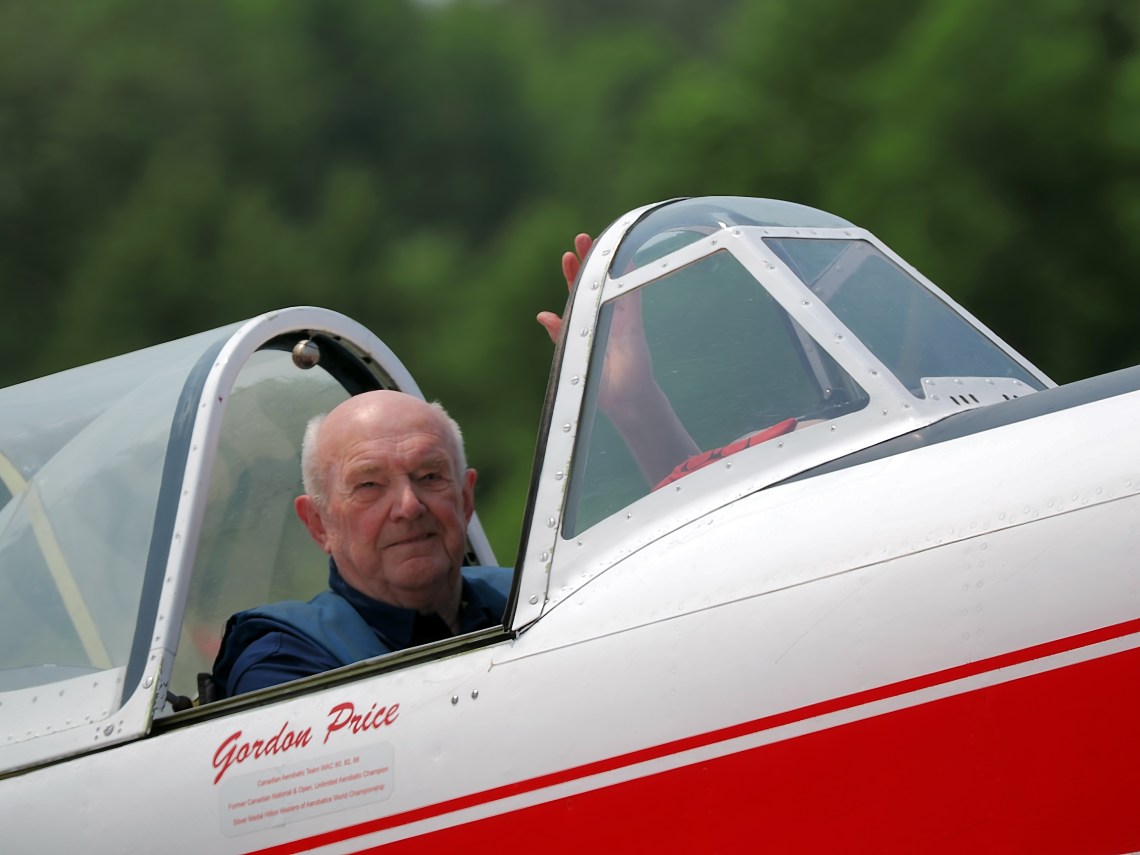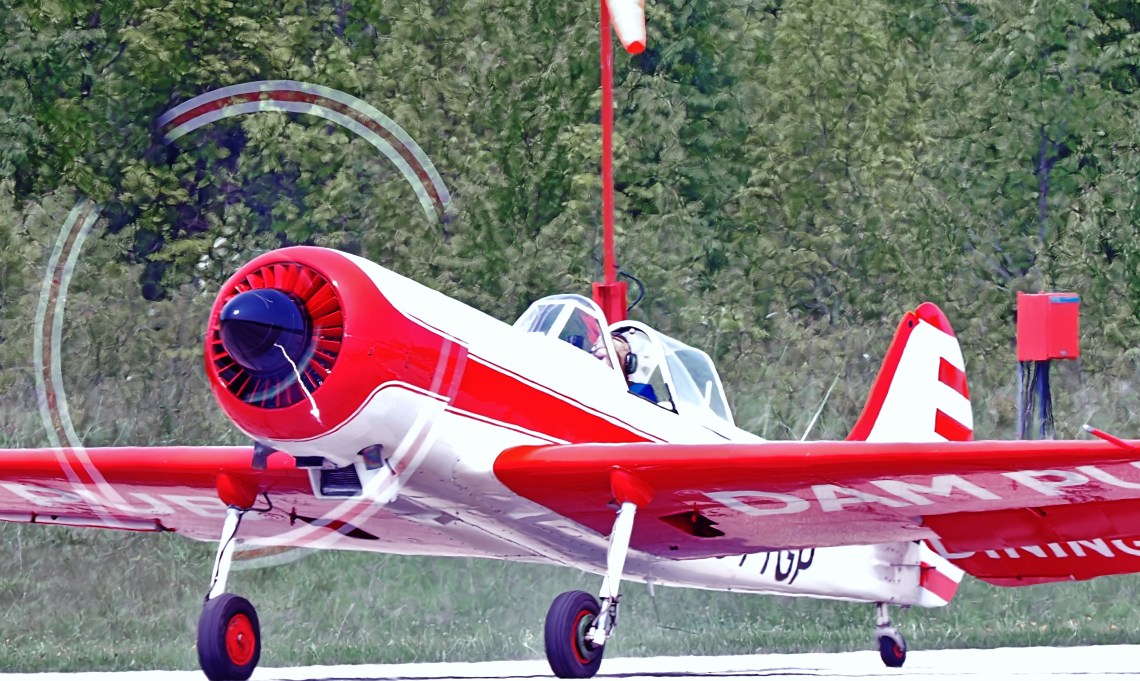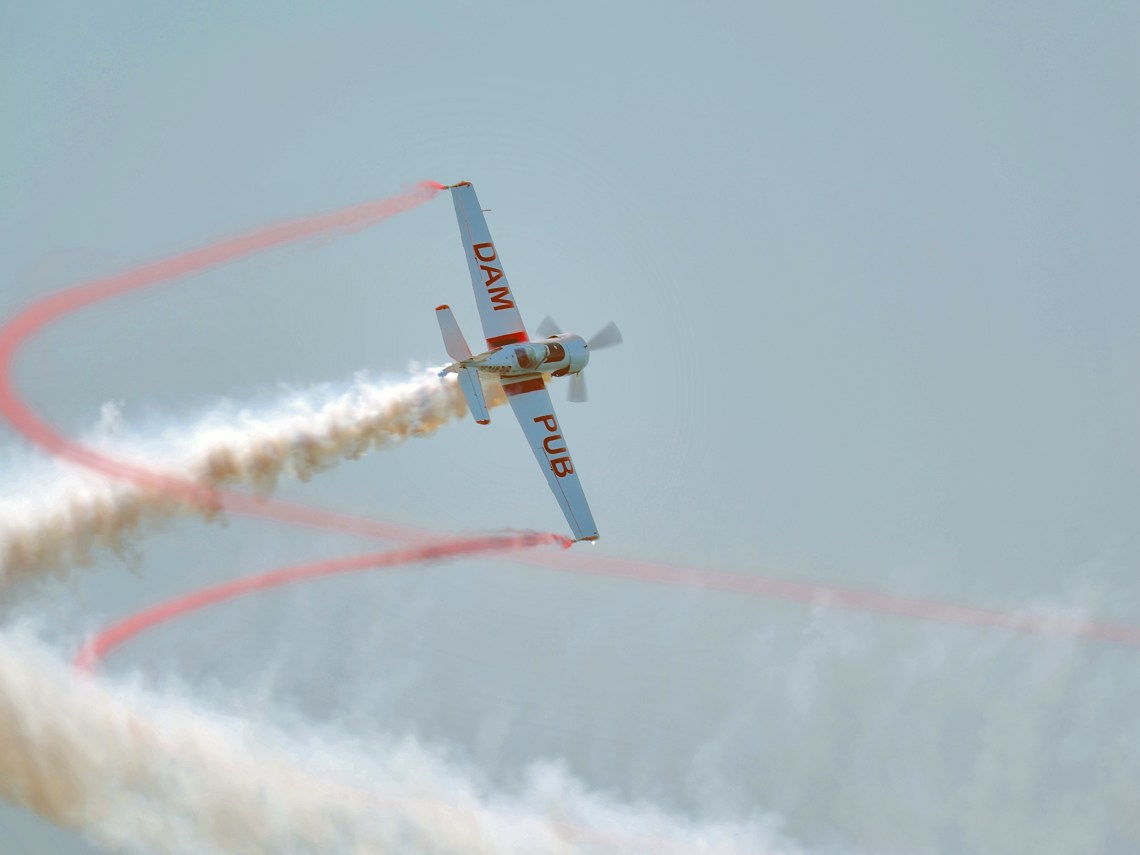I met Gord Price this Spring, although I’ve been a fan of his for several years. Well before Covid. I heard he had changed his mind and decided to make 2023 the very last season that he would perform as an aerobatic pilot with a very limited number of appearances. This would be my only opportunity to learn a little about the man and document his finale.
Gord is a man of numerous achievements. Foremost he is also a man of 81 years and still spinning his aircraft and enduring forces greater than 7 Gs. And then flying solo last year to perform in British Columbia with 10 stops to refuel since aerobatic planes do not traditionally have large fuel tanks. It was tough, he said as a matter of fact. I bet it was.


Gord would be assigned to a 24h period of Quick Reaction Alert along with other pilots and be ready to scramble at a moments notice. All the planes were sequestered in a barbed wire fenced enclosure. Each plane was kept at constant readiness able to become airborne in 15 minutes. It sat on a painted white square known as the No Lone Zone where no one was allowed within the zone without someone else at all times and guarded by an American MP. Gord passed the time playing bridge and fortunately that is all he had to do.
If an alert had been called, pilots would be strapping into their cockpits as weapons enabling codes from both the Canadian and US governments were transmitted over the radio. Accuracy and timing were crucial since hundreds of other NATO planes were also attacking and each attack had to be coordinated to prevent planes from flying through another plane’s delivered nuclear explosion. Flying at 600mph and as low as 50 feet above the ground to avoid detection and surface to air missiles the final moments of the run would be made at Mach 1, climbing 45o at 3G, release bomb, invert and dive down to 50 feet and level out and get clear at Mach 1.5. The plan was to return to base but Gord felt there would likely be nothing to return to so mission survivability was … rather low.
With lots of practice, Gord estimated he could drop the bomb within 300 ft of the target and within 3 seconds of the projected time of bombing using only maps and a stopwatch since no digital aids were available. These maps were special though and a Canadian innovation that all the other NATO air forces involved in low level attacks later adopted. At low altitude, the radar returned a confusing mix of shadows and blobs generated by hills. Physical contour maps of the flight path were hand made at 1:100,000 scale and photos of the shadows generated by a weakly lit penlight, covered with a ping pong ball with a horizontal slit to simulate a radar beam, were taken. These proved to be accurate simulations of what could be seen on the scope in flight and allow pilots to track and confirm their flight paths on radar alone and in any kind of weather. This later became the basis for terrain based radar predictions used in the navigation system of the cruise missile.

By 1967, Gord was at a crossroads. He had only been given a short service 5 year commission and he had a wife and two children to support. He applied to civilian airlines and received job offers from Air Canada, CP Air and TWA. And then the unexpected offer of a permanent commission with the RCAF. It took Gord three days to make that difficult decision. He spent the next 36 years flying with Air Canada – which also gave him the time and financial freedom to build and fly his own aerobatic aircraft.
Gord was First Officer on a DC-8 flying to Winnipeg in 1974 when its Captain showed him a photograph of a Steen Skybolt lightweight aircraft that he was building. Gord was inspired to follow suit but first he went back to high school to take a Grade 10 oxyactylene welding course. He had experience with wood working growing up and later acquired metal working skills as an apprentice in a shop. He extended the garage at home by eight feet to fit the wings and assembled the Skybolt underneath the covered backyard patio and ran the engine with the plane safely tied to the fire hydrant. The plane was completed in 1976 and won the Keith Hopkinson Award for Best Homebuilt in Canada. He began to learn aerobatics with it. The next year he started building a Pitts Special.
After his experience with the Pitts, he realized he could further optimize its wing design and with technical assistance from engineers at the National Research Council (NRC) he invented the Ultimate Wing. The wing tips were squared and shortened by 9 inches. The oversized symmetrical ailerons were built from aluminum and were drastically lengthened with a leading edge some 15% thicker than the wing itself so that it would reattach to the airflow with a blunt trailing edge moving the center of pressure back. This also increased torsional forces on the wing which required the introduction of guy wires to reduce twisting. But it also doubled the roll rate, the original goal of the modifications. He flew this Ultimate Pitts in the World Aerobatic Championships at Spitzerburg, Austria in 1982 and the Swiss judge complained that it rolled … too fast!


The Ultimate Aircraft Corporation was born in 1985 selling kits and fully assembled biplanes with an elongated small fuselage and the swept fully symmetrical wing pushed forward ahead of the canopy. To help overcome the natural stability of the aircraft design, Gord devised an integrated control system so that when the stick is pulled back, elevators go up a maximum of 25° and the 4 ailerons go down 5° acting as flaps which helped pitch the nose in the desired direction while the wings continue to lift at higher angles of attack. Gord flew the largest model, the Ultimate 10-300 to another 15th placing in the 1988 WAC in Red Deer, AB but financial difficulties closed the venture in 1989. He sold off his aircraft and stop performing.

After retiring from Air Canada in 2002, he realized he might be a little depressed having not flown for seven years. He was living with his wife in Scotland when his daughter who had begun a career as a bartender back home fantasized about owing a Scottish pub which they could call the “damn pub”. The Dam Pub began in Thornbury, ON where there was indeed a local dam and a local beaver dam. It recently moved to nearby Meaford and boasts an inventory of over a thousand whiskies and elevated cuisine.
So in 2011, at the age of 69, he decided to be an aerobatic pilot again and purchase the prototype model of a Yakovlev Yak-50.













Gord tells me the Yak-50 will be up for sale soon and this time retirement feels right.



